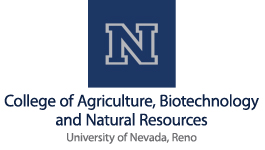Team:Nevada/misc
From 2010.igem.org
(New page: == Promoters == {|align="justify" |- <html> <div id="vertmenu"> <h1>Subpages</h1> <ul> <li><a href="https://2010.igem.org/Team:Nevada/DREB1C" tabindex="1">DREB 1C</a></li> <li><a hre...) |
(→ccdb) |
||
| (7 intermediate revisions not shown) | |||
| Line 1: | Line 1: | ||
| - | + | {{Nevada_css}} | |
| + | [[Image:Picture 14.png|border|left|950px]] | ||
| + | {{Nevada_topbar}} | ||
| + | <div style="padding: 10px 10px 30px 10px;"> | ||
| - | |||
| - | + | == ccdB == | |
| - | + | ||
| - | + | ||
| - | + | ||
| - | + | ||
| - | + | ||
| - | + | ||
| - | + | ||
| - | + | ||
| - | + | ||
| - | + | ||
| - | + | ||
| - | <p> | + | |
| + | |||
| + | |||
| + | |||
| + | |||
| + | <p> <html> | ||
<a href="https://2010.igem.org/Image:IMG_6031.JPG"><img src="https://2010.igem.org/Image:IMG_6031.JPG" class="shadow" style="float:left;width:170px;margin:10px"></a> | <a href="https://2010.igem.org/Image:IMG_6031.JPG"><img src="https://2010.igem.org/Image:IMG_6031.JPG" class="shadow" style="float:left;width:170px;margin:10px"></a> | ||
| - | </html> | + | </html></p> |
| | | | ||
|} | |} | ||
| + | |||
| + | |||
| + | The ccdB gene is a known topoisomerase II poison and will kill all available cell lines with the exception of DB3.1 cell lines available from Invitrogen. The gene can be used as a selectable marker by ligating it with the plasmid and structure of interest and transforming it into a cell line susceptible to the toxic effects of ccdB. Colonies that grow on plates should contain the plasmid and gene of interest as ccdB inserted into the plasmid will kill cell cultures. | ||
Latest revision as of 22:49, 15 October 2010
ccdB
|
|}
The ccdB gene is a known topoisomerase II poison and will kill all available cell lines with the exception of DB3.1 cell lines available from Invitrogen. The gene can be used as a selectable marker by ligating it with the plasmid and structure of interest and transforming it into a cell line susceptible to the toxic effects of ccdB. Colonies that grow on plates should contain the plasmid and gene of interest as ccdB inserted into the plasmid will kill cell cultures.
We would like to thank the following sponsors for their support in helping us make this project possible.
Much thanks to the Departments of Biochemistry and Biotechnology and the College of Agriculture, Biotechnology and Natural Resources for their encouragement and support. Thank you Nevada INBRE for over $6,000 in support for supplies and registration costs.
Thank you to Associated Students of the Univeristy of Nevada for supporting our fund raising efforts.
Thank you to Promega Co. for free enzyme donations.
Thank you to Invitrogen Co. for a discount on our Vector NTI program.

| 
| 
| 
| 
|
|---|
 "
"
